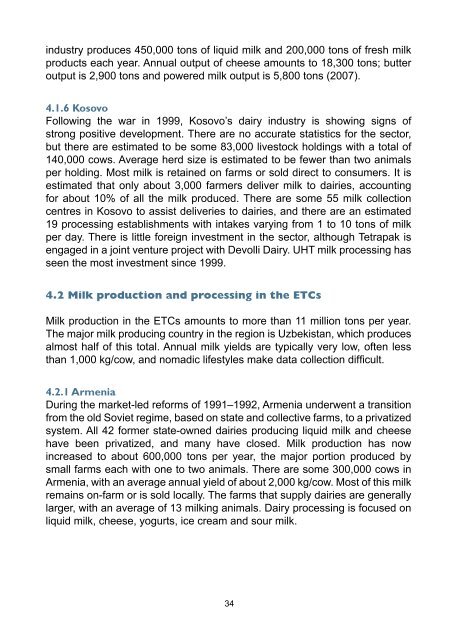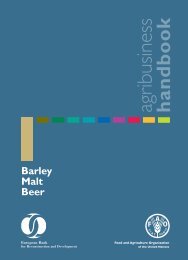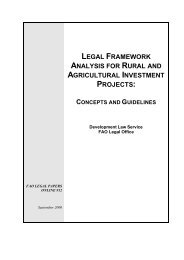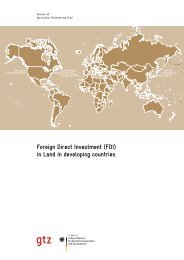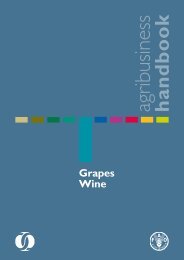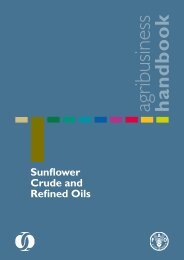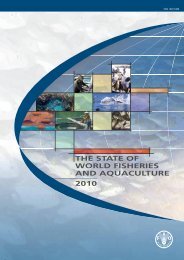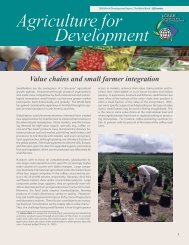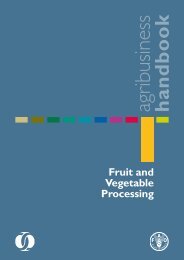Agribusiness Handbook: Milk / Dairy Products - FAO
Agribusiness Handbook: Milk / Dairy Products - FAO
Agribusiness Handbook: Milk / Dairy Products - FAO
Create successful ePaper yourself
Turn your PDF publications into a flip-book with our unique Google optimized e-Paper software.
industry produces 450,000 tons of liquid milk and 200,000 tons of fresh milk<br />
products each year. Annual output of cheese amounts to 18,300 tons; butter<br />
output is 2,900 tons and powered milk output is 5,800 tons (2007).<br />
4.1.6 Kosovo<br />
Following the war in 1999, Kosovo’s dairy industry is showing signs of<br />
strong positive development. There are no accurate statistics for the sector,<br />
but there are estimated to be some 83,000 livestock holdings with a total of<br />
140,000 cows. Average herd size is estimated to be fewer than two animals<br />
per holding. Most milk is retained on farms or sold direct to consumers. It is<br />
estimated that only about 3,000 farmers deliver milk to dairies, accounting<br />
for about 10% of all the milk produced. There are some 55 milk collection<br />
centres in Kosovo to assist deliveries to dairies, and there are an estimated<br />
19 processing establishments with intakes varying from 1 to 10 tons of milk<br />
per day. There is little foreign investment in the sector, although Tetrapak is<br />
engaged in a joint venture project with Devolli <strong>Dairy</strong>. UHT milk processing has<br />
seen the most investment since 1999.<br />
4.2 <strong>Milk</strong> production and processing in the ETCs<br />
<strong>Milk</strong> production in the ETCs amounts to more than 11 million tons per year.<br />
The major milk producing country in the region is Uzbekistan, which produces<br />
almost half of this total. Annual milk yields are typically very low, often less<br />
than 1,000 kg/cow, and nomadic lifestyles make data collection difficult.<br />
4.2.1 Armenia<br />
During the market-led reforms of 1991–1992, Armenia underwent a transition<br />
from the old Soviet regime, based on state and collective farms, to a privatized<br />
system. All 42 former state-owned dairies producing liquid milk and cheese<br />
have been privatized, and many have closed. <strong>Milk</strong> production has now<br />
increased to about 600,000 tons per year, the major portion produced by<br />
small farms each with one to two animals. There are some 300,000 cows in<br />
Armenia, with an average annual yield of about 2,000 kg/cow. Most of this milk<br />
remains on-farm or is sold locally. The farms that supply dairies are generally<br />
larger, with an average of 13 milking animals. <strong>Dairy</strong> processing is focused on<br />
liquid milk, cheese, yogurts, ice cream and sour milk.<br />
34


